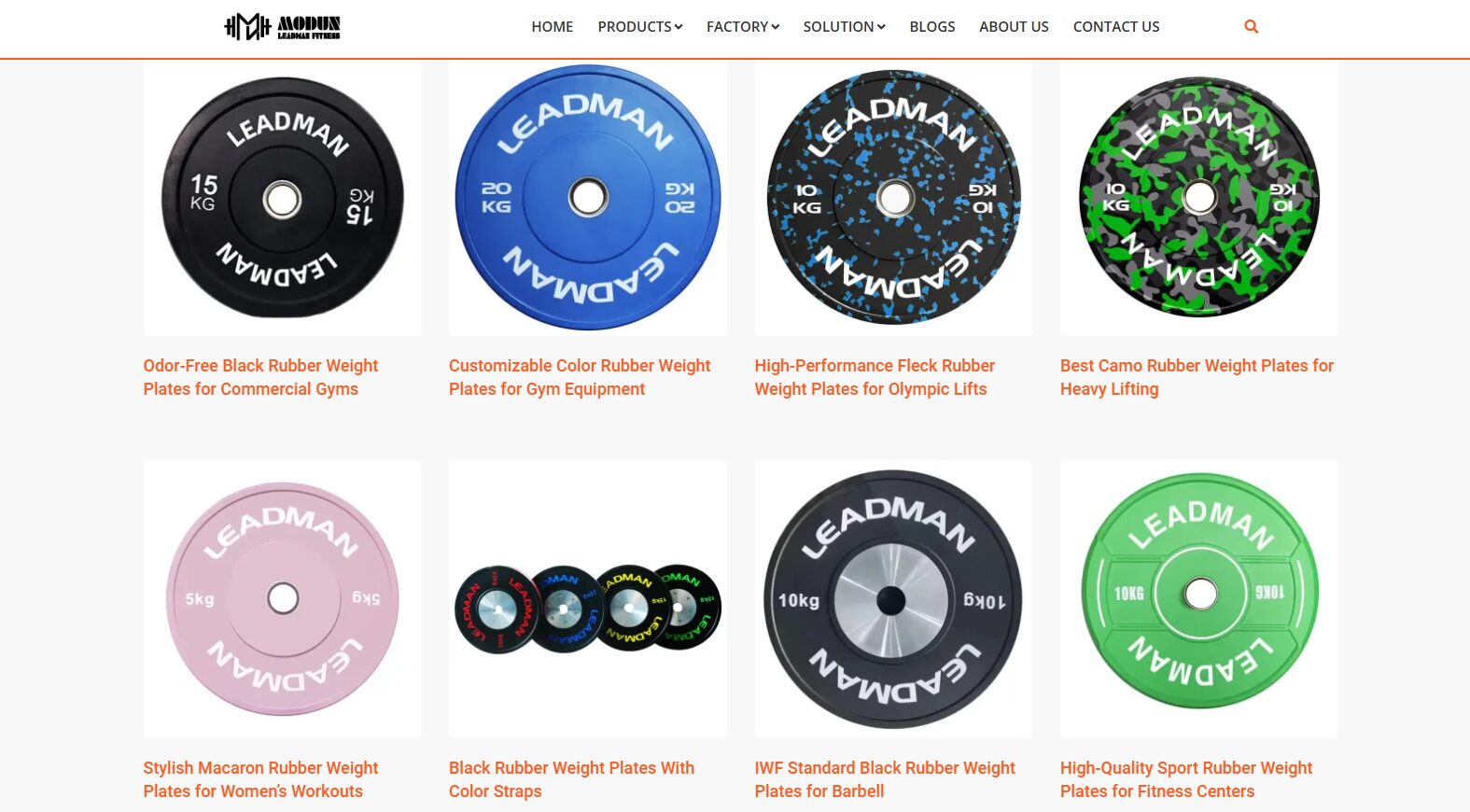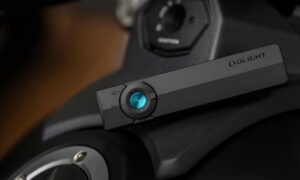Rubber weight plates, manufactured by Leadman Fitness, come in various types, each designed for specific training needs and preferences. These plates offer unique features, materials, and durability levels, making them suitable for different workout environments, from commercial gyms to public setups. Below, we will discuss three common types of rubber weight plates: Standard Rubber Plates, Competition Rubber Plates, and Urethane Rubber Plates.
Standard Rubber Plates
Description and Uses
Standard rubber weight plates are the most common and widely used type of rubber plates. These plates are coated in a thick layer of rubber over a metal core, offering a durable, cost-effective solution for a wide variety of training scenarios. Their primary function is to add weight to barbells, dumbbells, and other strength training equipment. They are ideal for general strength training, bodybuilding, and even lighter cardio exercises that incorporate weight, such as weighted lunges or sled pushes.
Standard rubber plates are typically available in multiple weight increments, allowing users to gradually increase the load as they build strength. The rubber coating helps reduce noise and protects both the plates and the floor from damage when weights are dropped or mishandled. They also provide a safer training experience by offering a softer touch compared to iron or steel plates.
Affordability
One of the key advantages of standard rubber plates is their affordability. These plates are generally less expensive than specialized plates like competition or urethane options, making them a popular choice for budget-conscious lifters and gym. Despite being more economical, standard rubber plates still offer excellent durability and longevity, making them a solid choice for those looking for a good balance between price and performance.
Common Weight Options
Standard rubber weight plates are available in a wide range of sizes, catering to both beginner and advanced lifters. Some common weight options include:
- 5 lbs (2.27 kg)
- 10 lbs (4.54 kg)
- 25 lbs (11.34 kg)
- 45 lbs (20.41 kg)
These plates are also available in metric weights like 2.5 kg, 5 kg, and 10 kg for users in countries that use the metric system. They are available in both standard and Olympic-sized holes to fit different barbells, ensuring versatility in most gym environments.
Competition Rubber Plates
Description and Uses
Competition rubber plates are specifically designed for Olympic lifting, providing both performance and precision for competitive athletes. These plates are made from high-quality rubber that ensures consistent weight and maximum durability, making them ideal for training in sports such as weightlifting and other performance-based disciplines where exact weights are critical. They are generally used in Olympic lifting competitions, where precision and safety are paramount. These plates are also known as Olympic weight plates due to their standard use in Olympic weightlifting events, ensuring they meet the rigorous demands of competition.
The rubber used in competition plates is typically denser and of higher quality than the rubber found in standard plates. This high-quality rubber ensures that the plates retain their shape and integrity even after multiple drops during high-intensity lifts like the clean and jerk or snatch. The density and structure of Olympic weight plates allow them to absorb shock better, reducing the risk of deformation, which is essential for maintaining the accuracy of weight measurements during competitive lifting.
In addition to their durability, competition plates are designed for Olympic lifts where precision is crucial, and weight discrepancies can negatively impact performance. These plates provide athletes with the consistency needed for training and competing at the highest level.
Features of Competition Rubber Plates
- Color-Coding: One of the standout features of competition rubber plates is the color-coding system. Each weight is assigned a specific color for easy identification during training and competition. For example, red is often used for 25 kg plates, blue for 20 kg plates, and yellow for 15 kg plates. This feature is especially useful in competitions where athletes need to quickly identify and select their desired weight.
- Firmness: Competition rubber plates tend to be firmer compared to standard rubber plates. This firmness helps maintain the integrity of the plate even under extreme pressure and impact, ensuring a longer lifespan and more consistent performance over time.
Durability and Consistency
The design and materials used in competition rubber plates ensure that they retain their form and weight consistency even with heavy use. This makes them the preferred choice for athletes who need precise weight measurements for their lifts. They are also designed to withstand the force of repeated dropping without cracking or losing their shape, which is a critical consideration in Olympic lifting where dropping plates from significant heights is common.
Urethane Rubber Plates
Advantages Over Standard Rubber Plates
Urethane rubber plates are an advanced variation of rubber-coated weight plates. These plates are made from urethane, a synthetic polymer that has distinct advantages over the standard rubber used in regular weight plates. Urethane plates offer superior durability, enhanced odor resistance, and a longer lifespan compared to their standard rubber counterparts. Urethane is more resistant to wear and tear, and it can handle more abuse without showing signs of damage, making them a popular choice for heavy training environments.
In addition to their long-lasting quality, urethane rubber plates are often used as change plates in various weightlifting setups, especially in gyms where precision and durability are important. Change plates are typically smaller weight plates used to fine-tune the load on an Olympic barbell during lifting, and the enhanced durability of urethane ensures these smaller plates stand up to the wear and tear of frequent adjustments. Whether used in Olympic lifting or other performance-based sports, urethane plates provide a reliable, long-lasting option that supports athletes looking for optimal performance and longevity in their training equipment.
Better Odor Resistance
One of the most notable features of urethane rubber plates is their odor resistance. While standard rubber plates can sometimes have a strong rubbery odor, especially when new, urethane plates tend to emit much less odor. This makes them an ideal choice for gyms where many plates are used daily, as they help maintain a cleaner and more pleasant-smelling environment.
Longer Lifespan
Urethane is a much more durable material than standard rubber. Urethane-coated weight plates can withstand more drops and are less likely to crack, chip, or degrade over time. Urethane weight plates are also more resistant to the damaging effects of UV rays, which can cause rubber plates to harden and crack when exposed to sunlight for long periods. This makes urethane plates an excellent choice for both indoor and outdoor training environments.
Durability and Cost
While urethane plates are generally more expensive than standard rubber plates, their durability and longevity make them a worthwhile investment for those who are looking for a more premium option. These plates are commonly found in high-end gyms, commercial fitness centers, and in environments where equipment sees heavy use and needs to last longer.
Weight Options
Urethane rubber plates are available in many of the same weight options as standard rubber plates and competition plates, including common sizes like:
- 2.5 kg
- 5 kg
- 10 kg
- 25 kg
- 45 kg
These plates are often available in Olympic-size and standard-size holes, similar to other rubber weight plates, ensuring compatibility with a wide variety of barbells.




























